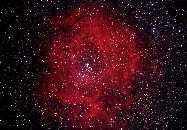|
Astronomy Portal to the Heavens, Deep Sky and Universe
|
|
Buying a telescope Experience amateurs buy scopes based on three main criteria; size, quality and mounting
. Mirror or lens size is the first consideration. Magnifying power
is not a consideration as one might expect. What larger diameter scopes offer us is light gathering power, which translates into better image resolution. That is
the larger the lens or mirror the more sky objects you'll be able to view. Particularly, as you desired to see more detail of a deep sky object the need for larger scopes will increase. Scopes that use lens are known as refractors. Refractors seal the lens into the scope and require little maintenance. The light comes straight through with no obstruction, giving clean crisp images. Scopes with mirrors are known as Newtonians. Newtonians are open to the air and require occasional cleaning and adjustment. Newtonians also require a second flat mirror to bend the light outside the tube for viewing, this creates a slight visual interference. The main advantage is that large Newtonians can be made for relatively low cost. Refractors with 5 to 7 inch diameter len's are extremely expensive, while mirrors 10 through 30 inches diameter are of reasonable cost. Those interested mainly in viewing planets and multiple stars would do well with a good refractor. While those interested in Deep Sky Objects such as galaxies and nebular would want the light gather power of the larger Newtonian. A good all around scope for the beginner would be an 8 inch f/6 Newtonian. This size scope will capture numerous galaxies and nebular with reasonable detail. The 8 inch f/6 combination is also easy to make with excellent quality as well. The length of the scope tube is determined by the primary mirrors focal length. Lenses or mirrors can be made with long or short focal lengths. Long lengths give higher magnification while short lengths give brighter images and are preferred for deep sky use. Photographers prefer the shorter focal lengths and everyone loves a compact tube for portability. Short focal lengths are more difficult to manufacture however so optical quality then becomes a concern. The focal length of an 8 inch f/6 is 48 inches, a good balance between portability and size. The magnification is determined by the focal length of the scope divided by the focal length of the eyepiece. An eyepiece with a 0.5 inch focal length would yield 96 magnification with any 48 inch scope. That's closed to 10 times that of your standard 10X50 binoculars. What you can see through a small inexpensive instrument
Related Links
|
Space Exploration DVDs
| Space Exploration Books | From the Earth to the Moon | Earthlight: NASA - Spectacular Views
|
